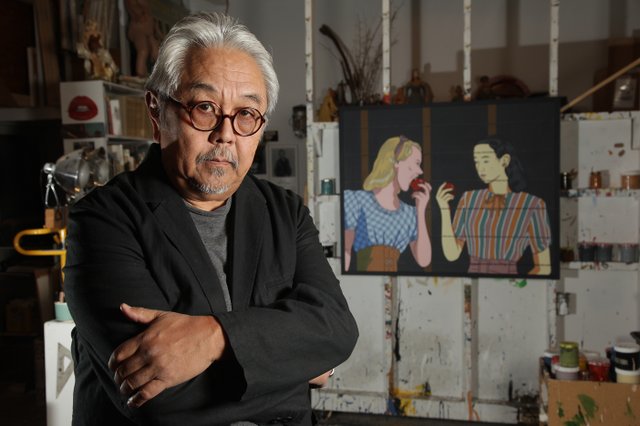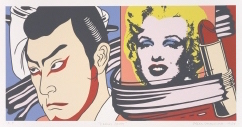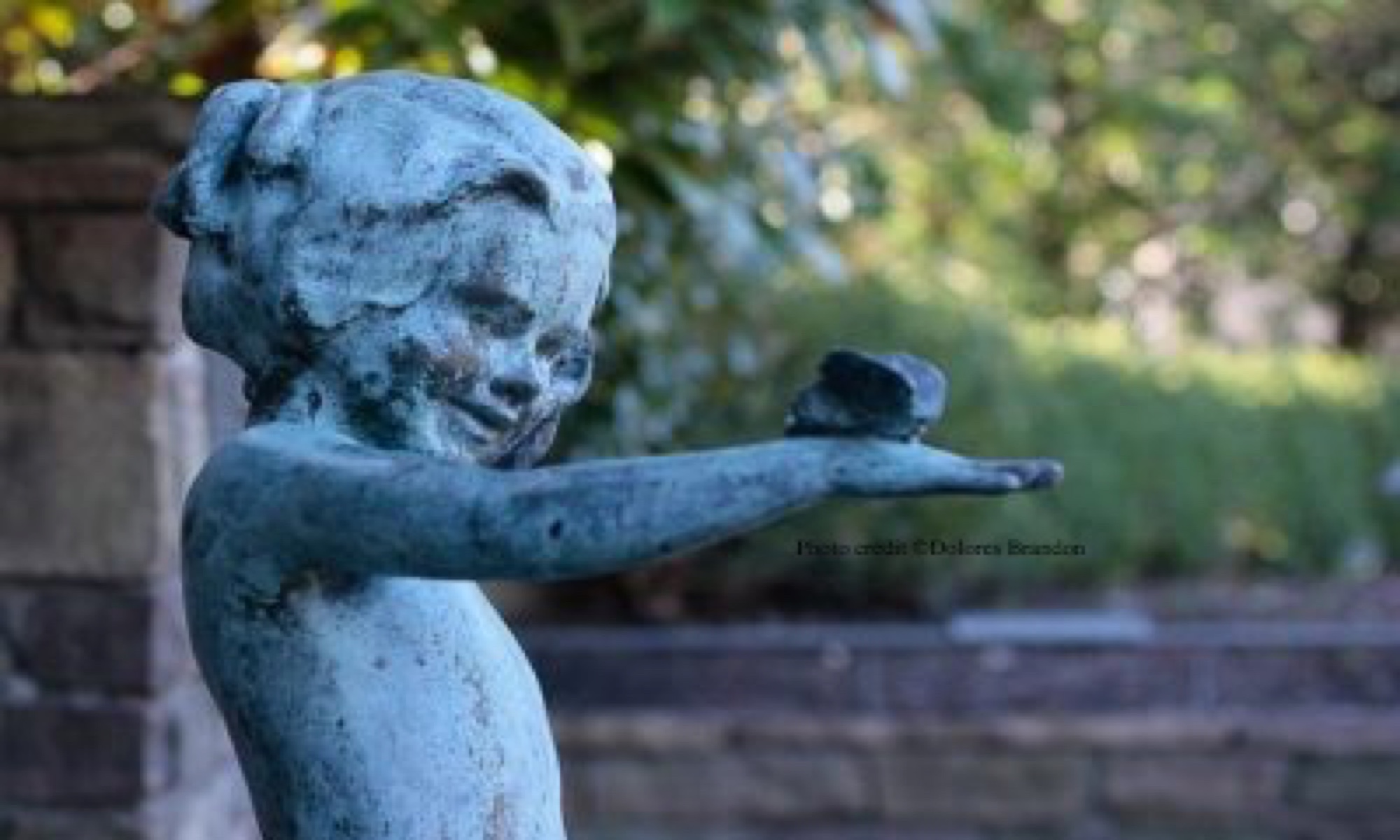Return of the Yellow Peril (1992)

‘The yellow peril’ – a pejorative phrase coined during WW2 to identify the Japanese presence in America – serves to fuel Shimomura’s passion for inquiry. Inspired by a life-long fascination with popular American imagery – Superman, Marilyn Monroe, Mickey Mouse – Shimomura reinvents those symbols as he wrestles with issues of racism and xenophobia in contemporary America.
Early childhood experience living at Minidoka (a Japanese American Internment Camp in Idaho, WWII) and the diaries his grandmother kept documenting the family’s time there are a rich resource for Shimomura’s work both as a painter and performance artist.
The following radio feature profiling Shimomura was produced for Crossroads and broadcast on NPR in the winter of 1992 when Return of the Yellow Peril was on exhibit at The Bernice Steinbaum Gallery (Soho,New York).
In his own words.
Shimomura discusses the evolution of traditional Japanese iconography in his paintings and the influence of Kabuki theater on his performance work.
Dolores Brandon (DB): What was the genesis of the Return of the Yellow Peril series?
Roger Shimomura (RS): I started [to do these paintings in the 1980’s] when there was a lot of publicity and Japan bashing surrounding certain real estate the Japanese were buying in this country – Rockefeller Center being the most obvious example.
The paintings themselves are, in a way, confirming America’s greatest nightmare – that the Japanese might simply take over this country. I chose to have them take over the very community I live in – Lawrence Kansas. I started with my friends – laborers, professional people, the Mayor, athletes, what have you – all of them are depicted as if Japanized by the Return of the Yellow Peril.
DB: [Earlier in this interview] you said you really had to become Japanese, you had to discover your own Japaneseness.
RS: Yes, there were a lot of things I had to work through. Coming out of grad school [Syracuse University, New York 1969] I was mostly influenced by my love for comics, and comic imagery. I collected comic books as a child. I seldom read them: fascination with that look was the biggest influence. That, and Andy Warhol – I was very enamored with [the pop] aesthetic.
It wasn’t until I got to Kansas and started having [to justify my identity as a US born Japanese American] that I realized the difference between Mickey Mouse and depictions of geishas in traditional Japanese painting was just a racial difference.
I was still (to me) painting comics, except that now, the shapes and the forms turned out to be geishas and samurais rather than Mickey and Minnie. However, I will say this, that after I did the very first painting with Japanese imagery I stepped back and looked at it and felt that I had created something very very foreign. Curiously enough when I had a show in Seattle of 8 paintings, one of which included this Japanese imagery, the people that came in said, ‘well, of course I like this painting of Japanese imagery because you’re Japanese. This is probably what you should be doing because this is what you are‘.

Nothing could have been further from the truth. I think a lot of that was because when [my family] came out of the camps in the mid ’40s, there was very little evidence of anything Japanese in our household. I’m sure this was due to the fact that my parents probably felt in a certain kind of way that they were punished for doing that previous to the war: that is they had identified [culturally Japanese] and not as Americans of Japanese descent. So I think in a way there was an over compensation for a quite lengthy period of time where there was virtually nothing Japanese around the house. This is the way I was raised.
So, in some ways Japanese imagery looked more foreign to me than it did to my white counterpart. Yet, the presumption was, ‘of course you do work like this, because this is what you look like‘.
In 1978 the direction of my work changed: I began to work with narrative [performance art] and I chose to work with [themes related to] the internment camps.

DB: Performance art – to what extent were you influenced by
the Japanese theater traditions?
RS: Very influenced. Having been to Japan several times, and having seen Kabuki and Noh and Bunraku theater I was absolutely fascinated. So I introduced those elements: in fact initially I used Kabuki theater in parody form to speak about the internment camps. No question that tradition was the biggest influence but, again, it was a tradition I discovered purely as a westerner. I mean I was practically a tourist going to Japan, seeing these things and being just fascinated by them. It’s not as though there was any deep cultural, gut empathy with that form of theater; I simply rediscovered it for myself.
DB: What’s the difference for you between painting and performance work?
RS: Painting is far more of an intellectual, illusionistic medium to work within. A lot of ideas that required a lot of intellectualizing in painting became apparent in a completely different kind of way: [in performance you’re] dealing with linear time and linear logic. Dealing with senses – the sense of sound, as well as sight opened up all sorts of possibilities, and allowed me to begin to use all of the stuff I’ve collected all my life – hundreds and hundreds of audio tapes.
More recently video tapes, records, things of this sort, costumes; things that weren’t identified as costumes at the time – kimonos that I’d accumulated for whatever reasons, different kinds of masks. All of a sudden it just became wonderful to go out and collect this stuff for a purpose, put it together. In 1984 I bought a video camera and used that as a sketching medium, where I would have dancers come over, and put kimonos and masks on and we would just play like that. That eventually lead into taking a serious stab at trying some things, ideas – in theater.
The above highlights have been excerpted from the unpublished extended recorded interview Brandon conducted with Shimomura in conjunction with producing the Crossroads/NPR radio feature.
